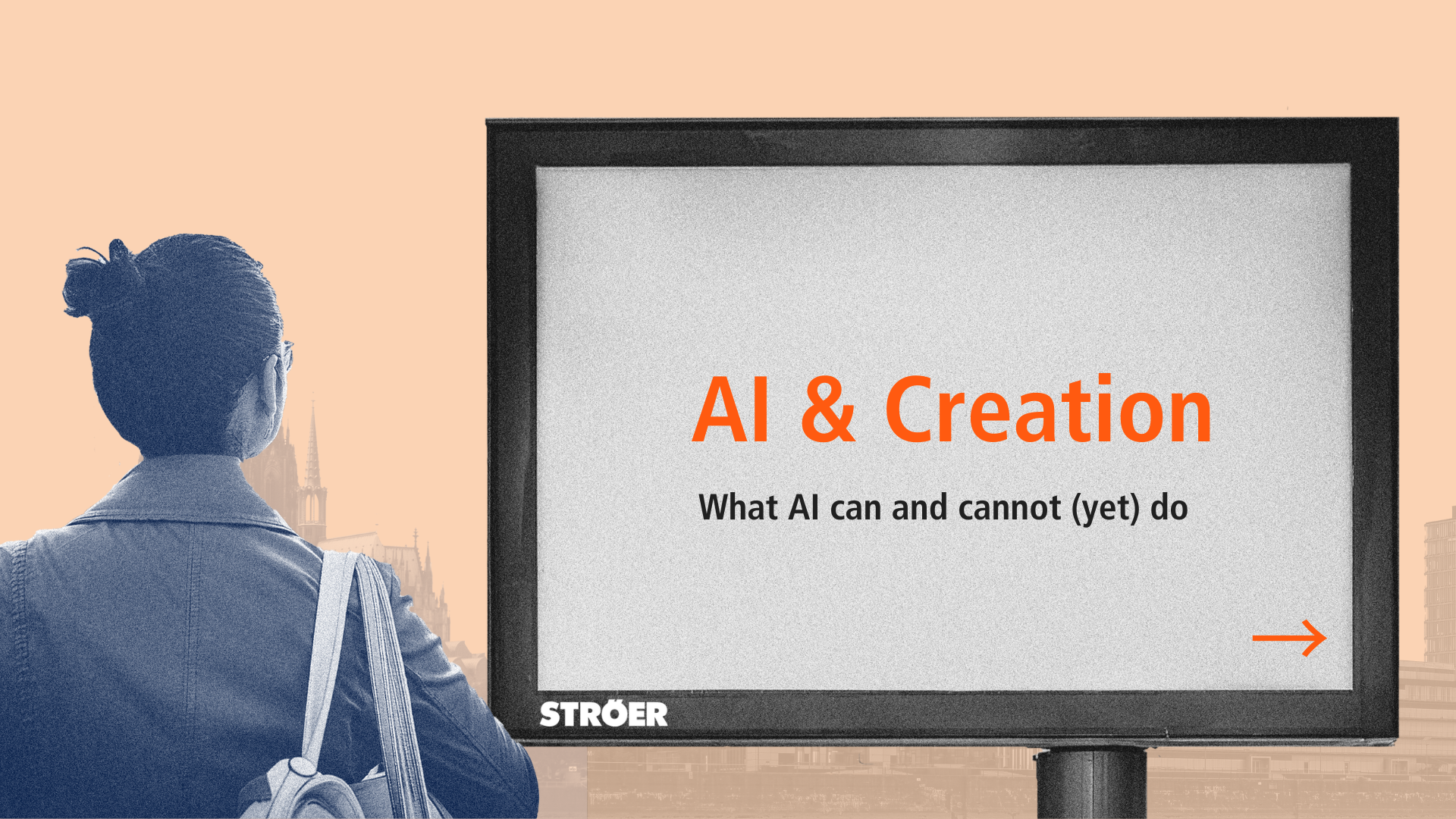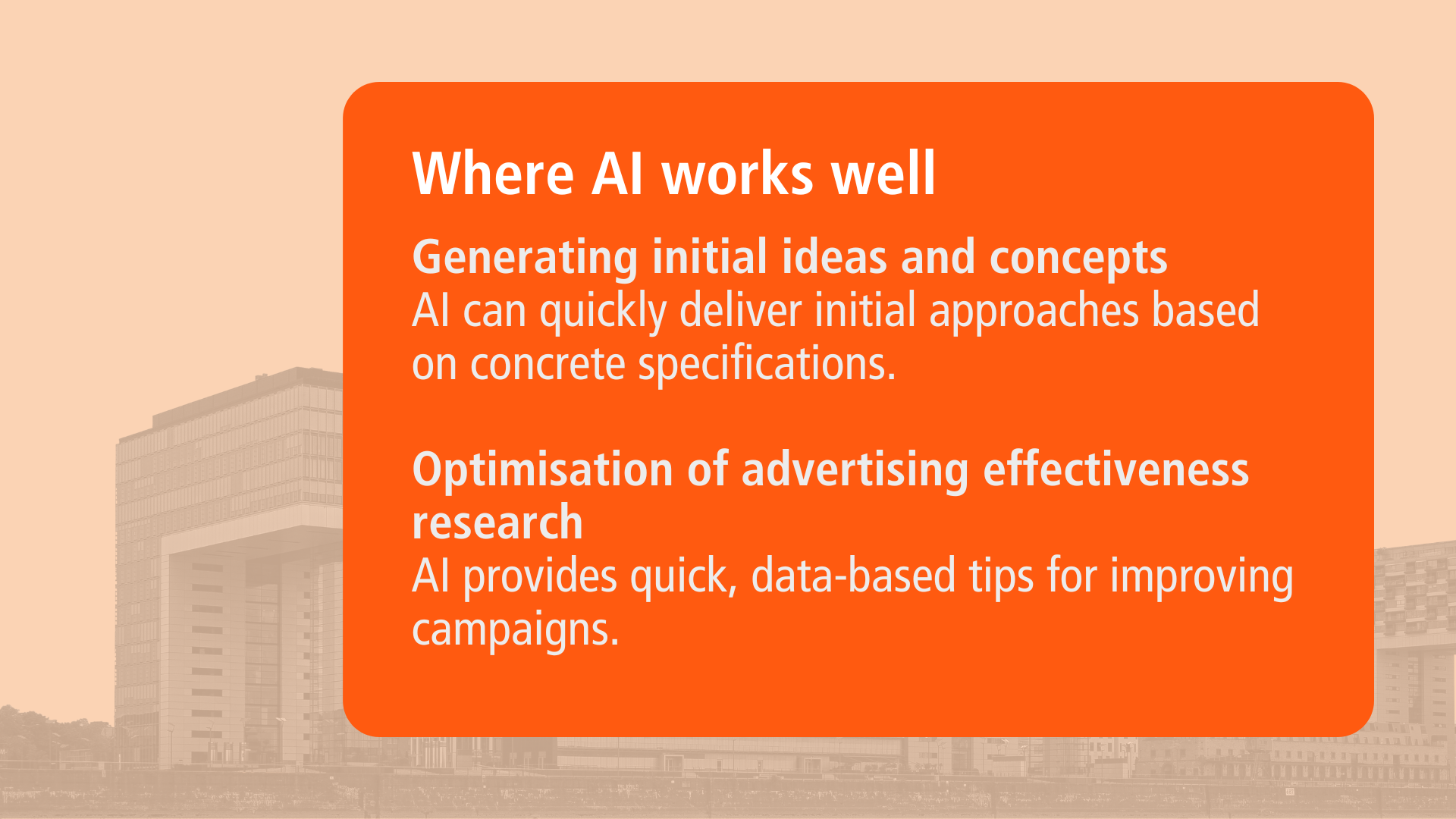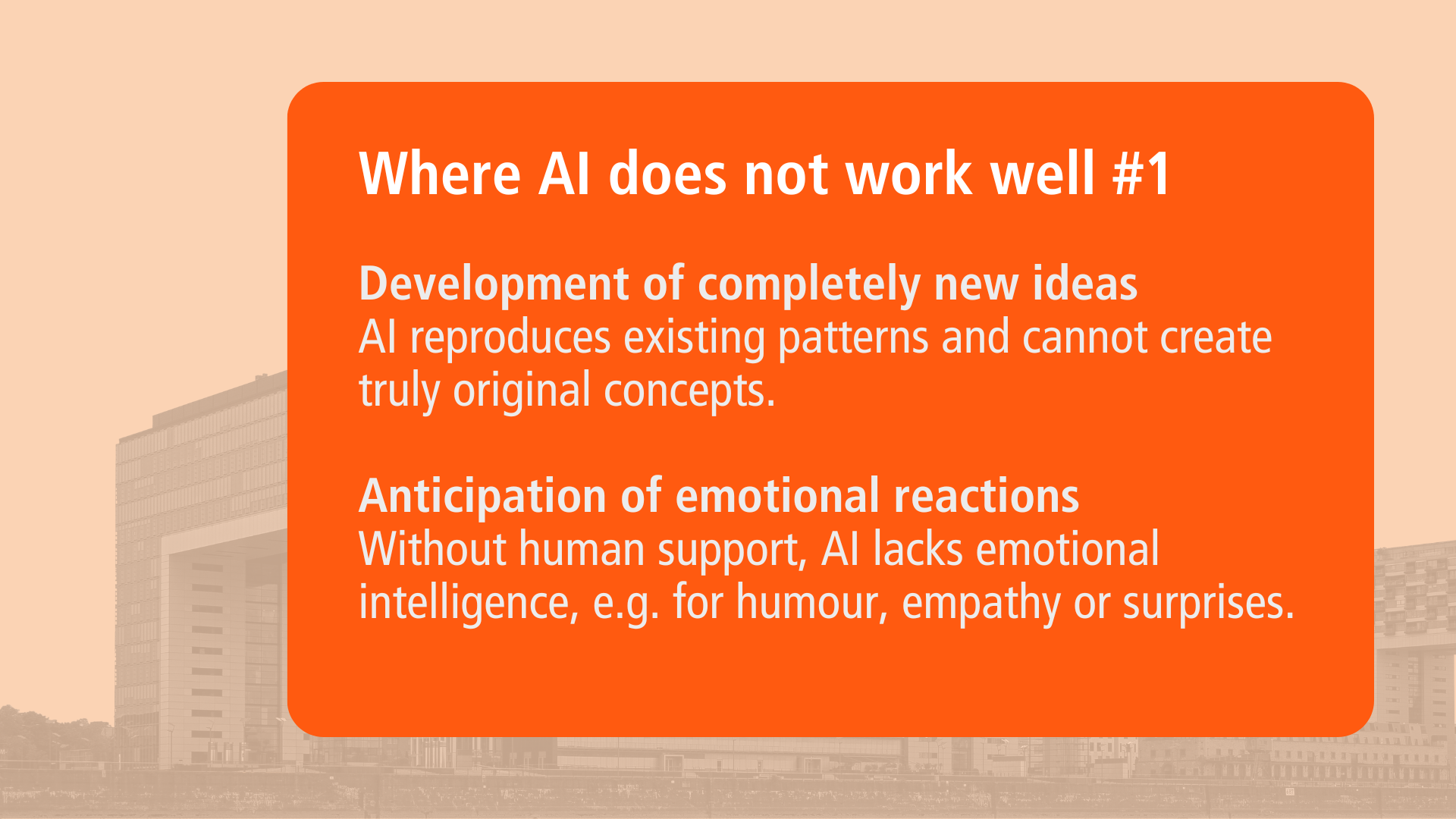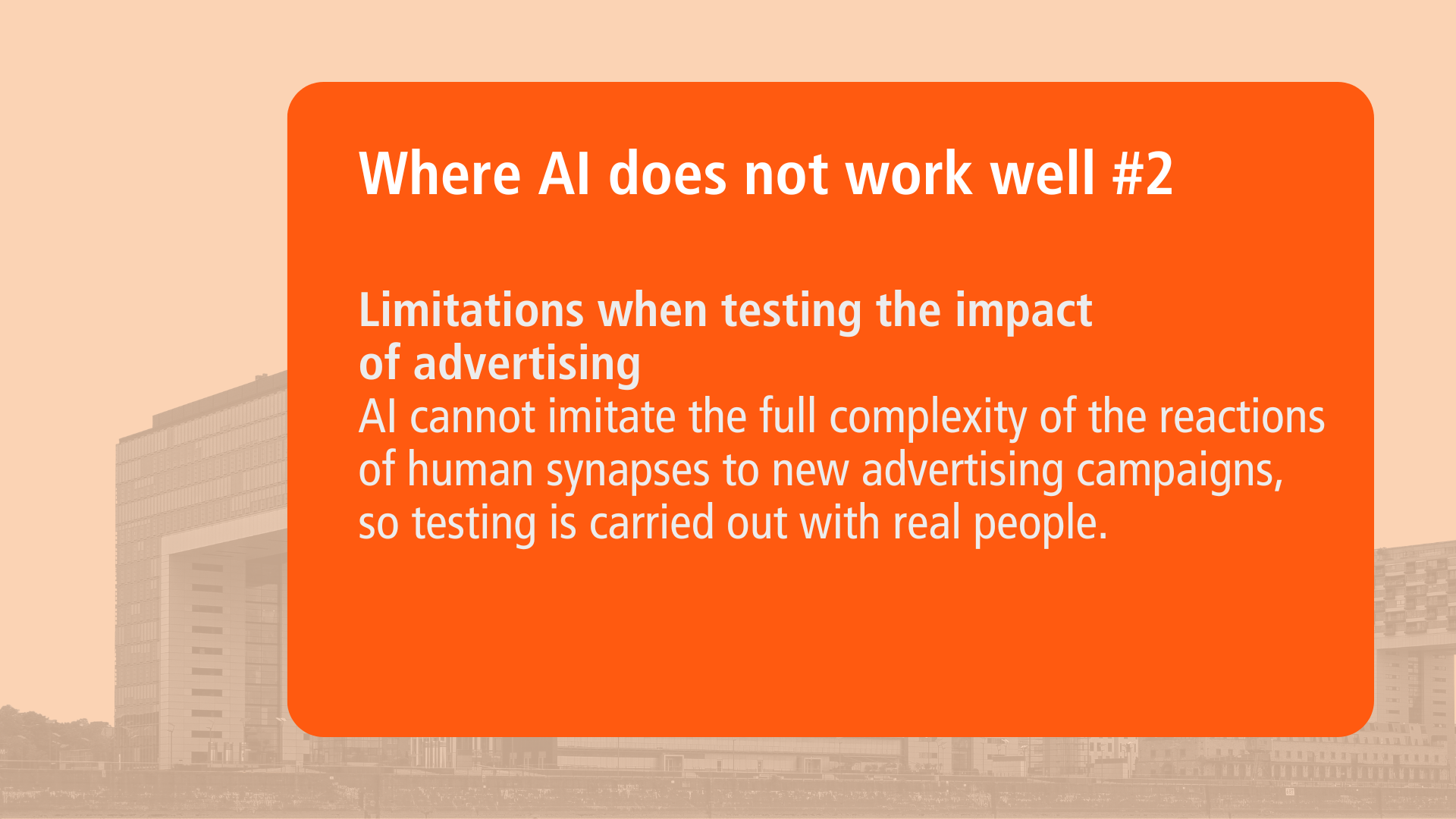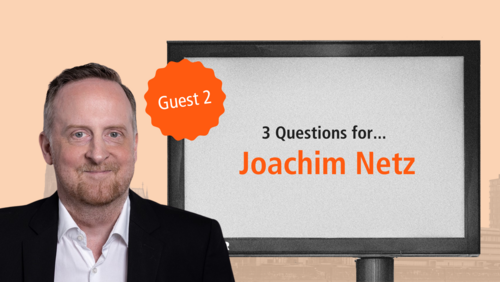
06. February 2025
Joachim Netz on the “Reason to Believe” and the role of AI in the design of (D)OOH creatives
How do you create advertising that not only stands out, but is also remembered? This question is the focus of our blog series on the creative design of (D)OOH motifs and commercials – our second expert, Joachim Netz, Director Research and Key Account Management at MediaAnalyzer, answers this question every day.
As an online market research institute, MediaAnalyzer is one of the leading specialists in advertising effectiveness and offers established test procedures for campaigns in all media channels. Its guiding principle is to analyse consumer reactions by combining non-verbal tools with target group surveys, and to provide practical recommendations for optimising the impact of advertising.
Question One
How do you see (D)OOH creations evolving in 2024 against the backdrop of an ever-changing media landscape?
(D)OOH is and remains one of the central pillars of a strong advertising impact. Unlike other channels, out-of-home can reach almost everyone: While waiting for the bus, while shopping or during a short walk. An eye-catching campaign in a public space is hard to miss.
We have also noticed that our clients are trying things out a bit more recently and are becoming bolder in their creations. Even if it does not always work, we think that this courage is a good thing. After all, boredom is no recipe for success.
This is true for the classic poster and even more so for DOOH. Out-of-home stands for a proven standard and at the same time, through DOOH, for modernity. While the classic poster has been tried and tested for a long time, the technical possibilities of DOOH allow new forms of advertising with added dynamism and interaction.
We know from our studies that DOOH is more eye-catching and can hold the viewer's attention for longer. This increases message retention. At the same time, DOOH has a surprisingly high level of acceptance and is rated comparatively favourably by many consumers.
![Quote from Joachim Netz on an orange background: ‘[Recently] we have noticed that our customers are trying things out a little more and are becoming bolder when it comes to creations. Even if not everything always works, we think this courage is a good thing. Because boredom is not a principle of success.' Below this is his name and title: ’Joachim Netz, Director Research and Key Account Management at MediaAnalyzer.](/media/01_bilder/05_presse_blog/2025/blogbeitraege/kreation_und_gestaltung_3_fragen_an/netz/netz_eng_bild__zitat.png)
Question Two
Against this background, what are the most important elements that make a (D)OOH campaign successful?
MediaAnalyzer has been testing OOH campaigns for more than 20 years. In addition to the basics such as a highly visible brand, three features have proven to be particularly successful: A strong eye-catcher to attract attention, a concrete Reason to Believe, i.e. a product benefit or an emotional value, and the KISS principle:
- Eye-catcher: In public spaces, where there are many different stimuli, it is of course essential to attract people's attention immediately. The window of opportunity to arouse interest in a product or service is known to be a few seconds at most.
- Reason to believe: Often underestimated: What is the added value of the product on display? The answer to this question should be clear to the viewer. Functional benefits are not necessarily the only reason to believe. An emotional value can also be highlighted.
- KISS principle: Keep it short and simple! Because out-of-home advertising tends to reach people on the move, it is important to keep your message as short and concise as possible. As mentioned earlier, viewers only have a few moments to absorb the message. Therefore, complicated and overloaded images should be avoided. Less really is more.
Overall, it is important to strike the right balance and target the right audience in the right place at the right time. DOOH has created additional opportunities to increase impact through intelligent targeting. Of course, this is not always easy. But when creative, media and impact experts work closely together, it is almost always possible to create a strong campaign at the end of the day.
Question Three
How do you see the role of AI in the creative design of (D)OOH campaigns and how should creatives position themselves in this context in the future?
As advertising effectiveness researchers, we are ambivalent about the role of artificial intelligence in advertising. MediaAnalyzer has investigated many approaches in this area over the past few years.
We believe that AI is an excellent tool for generating initial ideas and concepts based on concrete specifications or as a sparring partner.
But there are also clear limitations. For example, AI tends to be very self-similar: It is based on existing data and patterns and tends to reproduce existing solutions. It is therefore unable to come up with completely new, creative ideas. In addition, AI tries to calculate what the current user likes best. But advertising needs to create something new and appeal to the target audience. Without human expertise and emotional intelligence, AI can only do so much. Advertising works best when it connects emotionally with the target audience. Humour, empathy and surprise are particularly helpful. And AI cannot (yet) deliver this without human intervention.
We also use AI as experts in advertising effectiveness research and quickly get valuable tips for optimisation. But when it comes to capturing the full complexity of how human synapses respond to new advertising campaigns, we test with real people.
With Joachim Netz, we gained further insight into the current state of (D)OOH creative design – from the key elements of a successful (D)OOH campaign to the role of AI in the creative process. But what do other experts think about the challenges and opportunities in the field? You can also read our interviews with Wolfgang Hothum and Thomas Koch, who provide further exciting perspectives and valuable tips.
Media content in this blog post was created with the help of AI.



